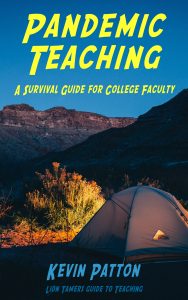| Circus Pages |
Many of you reading this have done that, right? You think that your dog sees the world the way you do, supposing that she recognizes you by your face, when really it's your smell and your voice. You think that poor lion sleeping in a circus wagon is bored and miserable, when in fact he feels secure in having a snug, safe place to sleep. You think that your cat loves you and missed you while you were gone when she rubs up against you, when she's just scent-marking you with her facial glands. Most of us cannot fully appreciate that animals perceive the world differently. We cannot fathom that they process thoughts differently and have different motivations, fears, and desires than humans.
That's why there aren't a lot of lion tamers in the world. OK, that and the basic human fear of being eaten by lion. It also explains why there are good animal trainers and not-so-good animal trainers. The good animal trainers really get it . . . and make use of that insight.
I think Temple Grandin
When I read her book, it really hit home with me. On every page, I heard myself saying out loud, "yes!" (Hmmm, now that I think about it I wonder how many others heard me talking to the book!)
When working with big cats, I remember learning that it's a snap to get most tigers to sit up and even stand up on their hind legs--but not so easy with lions. Why is that? I can't say for sure, but I'm pretty sure that it's because in nature tigers just naturally sit up and stand up when playing or sparring with each other. But lions rarely do. Besides, the structure of a lion's tail just doesn't lend itself to sitting up as easily as a tiger's on a flat surface (like the ground or a pedestal). You can get a lion to sit up easily only if they don't have to bend the base of their tail much (see the photo). If you don't take these things into account, you're going to be frustrated with those "stupid" lions that can't learn sit-ups as easily as those "brighter" tigers that can. When it's not about smarts at all.
As a teacher, I wonder how many times I make this kind of mistake with my students and how I teach them.
One mistake I know I've made is that I used to assume that my students have all the study and learning skills that I do . . . or that I did when I was a student at their level. It never occurred to me that I had somewhat advanced academic skills and very solid educational background. Yikes, those are not valid assumptions for all my students! I cannot assume that my students have the same skills and strategies for taking notes, or for reading a complicated text, or for memorizing facts, or for drawing inferences from those facts. Or that they even have similar personal and cultural experiences as their context.
Once I realized that, I found ways to provide a variety of resources that can help fill in the unique gaps in each of my diverse array of students. And what a difference it has made in the success of my students!
Beyond that, I also realized that not all students experience the world the way I do. I've not had some of the varied and sometimes traumatic experiences they have had. I don't have all the same physical and perceptual limitations as do my students. Some of these differences are profound. But most are extremely subtle. Subtle enough that they're easy to miss. And easy to dismiss.
I've found that when I have the lion tamer's approach of looking for and examining the unique perspectives and limitations of different groups of learners and of individual learners, I can more easily help them succeed in learning.
Good lion tamers take time to learn about the characteristics of species and take time learning about the characteristics of individual animals. They learn to see and think like a lion. They find that it helps them quickly find success in teaching their animals. Mediocre lion tamers think all animals should be able to do certain trained behaviors and should all be able to learn them the same way and at the same speed. And are puzzled over why they don't have consistent success with their animals. And sometimes experience frustrating or tragic results.
Great teachers are those that consistently help their students succeed by learning what works and what doesn't for different learners. They realize that their students don't necessarily think like they do. The great teachers try to think like their students to see where the challenges and fears are, so they can be overcome. The great teaches realize that "one size fits all" simply isn't possible when dealing with a diversity of learners.

